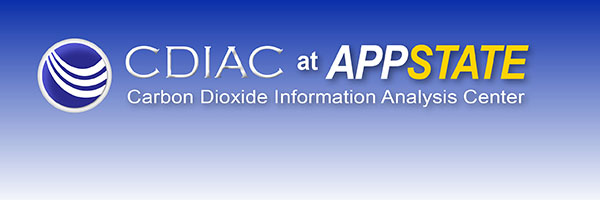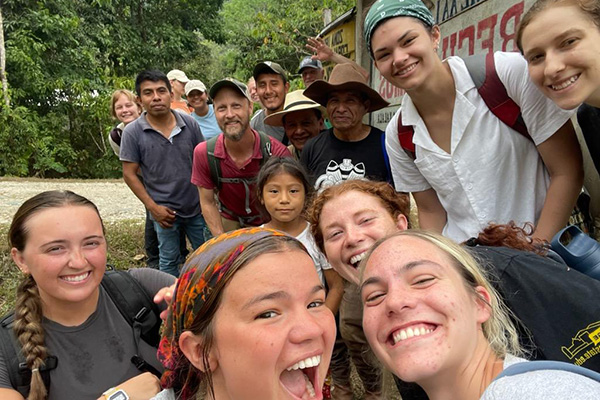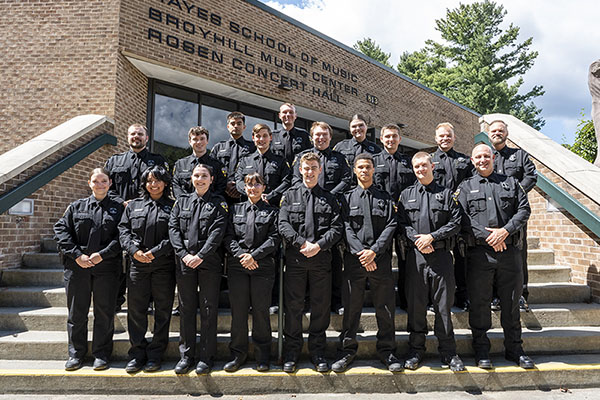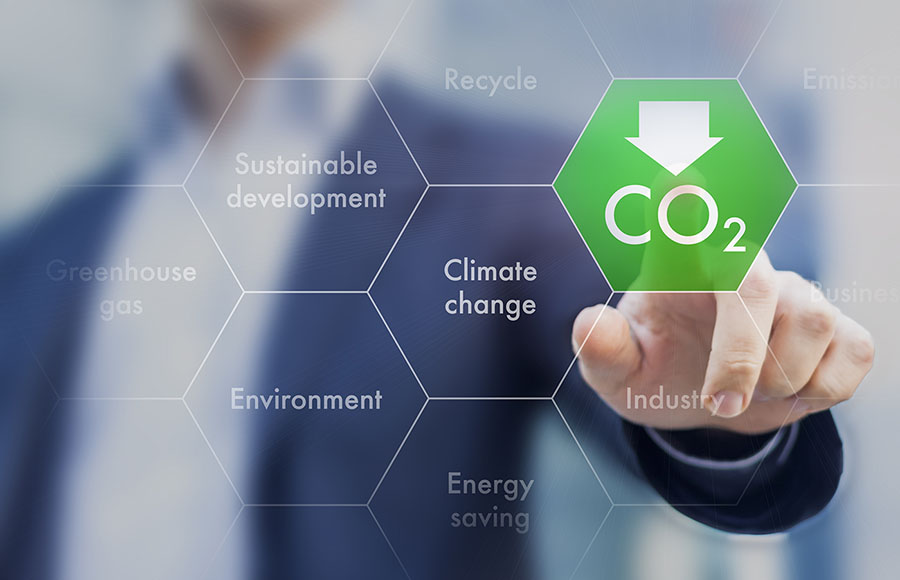
Shutterstock/NicoElNino image
BOONE, N.C. — Appalachian State University’s College of Arts and Sciences has partnered with the university’s Research Institute for Environment, Energy and Economics (RIEEE), as well as the Office of Research, to assume support for a long-term project that will provide continuing annual estimates of global and national carbon dioxide (CO2) emissions.
CO2 — the principal gas responsible for global climate change — is emitted when fossil fuels are burned.
Dr. Gregg Marland, a research faculty member with RIEEE and Appalachian’s Department of Geological and Environmental Sciences, and his colleagues in the Appalachian Carbon Research Group (ACRG) will maintain and provide annual updates for the emissions data set formerly managed by the Carbon Dioxide Information Analysis Center (CDIAC) at the Oak Ridge National Laboratory in Tennessee.
Global data on emissions through 2015 are already available here.
“Being able to continue to support the work of Dr. Gregg Marland and his colleagues is crucial. The annual report on global emissions trends offers governments, NGOs (nongovernmental organizations) and the public key information needed to seek and monitor big solutions in slowing CO2 emissions,” said Dr. Neva J. Specht, dean of Appalachian’s College of Arts and Sciences. “The college hopes to build on their work, as well as (work) with many others interested in climate change and resiliency.”
CDIAC produced estimates of CO2 emissions from all countries dating from 1750 to 2014, and this reporting on CO2 estimates has been used in studies around the world to track increases in emissions and successes in decreasing emissions. However, the center was closed by the Department of Energy in September 2017.
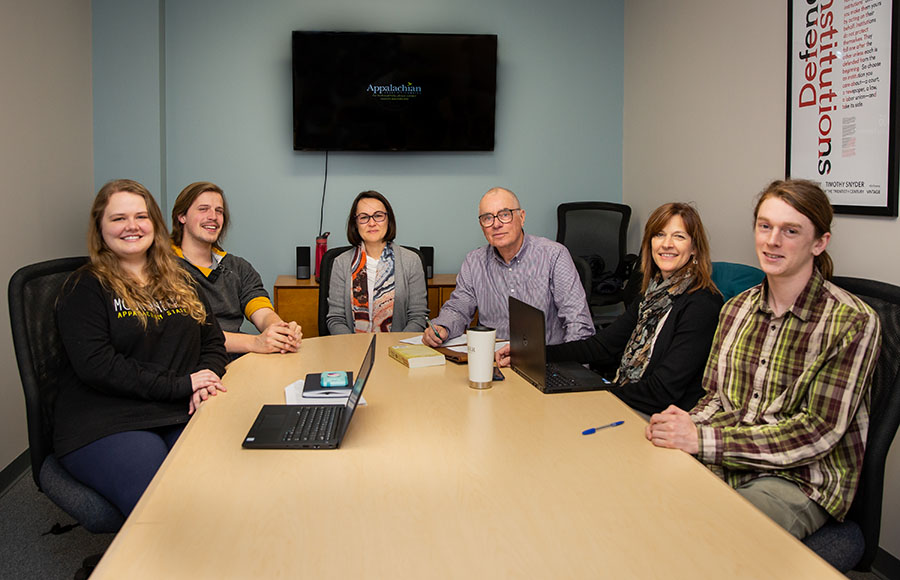
Six members of the Appalachian Carbon Research Group (ACRG) gather for a discussion. Pictured, from left to right, are senior actuarial science major Kaitlyn Burkett; political science graduate student Henning Tovar; Dr. Tatyana Ruseva, associate professor in the Department of Government and Justice Studies; Dr. Gregg Marland, research faculty member with RIEEE and the Department of Geological and Environmental Sciences; Dr. Tammy Kowalczyk, professor in the Department of Accounting and interim director of RIEEE; and political science graduate student Jamie Hedrick. Current ACRG members not pictured include: Dr. Eric Marland, professor and chair of the Department of Mathematical Sciences; Jason Hoyle, research analyst in the Appalachian Energy Center; Alex Helms, instructor in the Department of Accounting; and many additional faculty and students conducting carbon-related research. Photo by Ellen Gwin Burnette
Marland said in order to understand changes in the atmosphere and to monitor efforts to reduce emissions, it is important to keep track of emissions at all levels.
In a January correspondence titled “Per capita carbon emissions must fall to 1955 levels,” which was published in the science journal Nature, Marland, NASA Research Scientist Tom Oda and former CDIAC Director Tom Boden illustrate that population growth has been an important component in the growth of CO2 emissions, and that gaining important reductions in CO2 emissions will require widespread global cooperation.
According to their report, emissions of CO2 to the atmosphere from fossil fuels and cement manufacture during 2017 passed 10 billion metric tons of contained carbon for the first time. Marland said the concentration of CO2 in the atmosphere passed 400 parts per million and the increase in the global average of Earth’s surface temperature reached 1 degree Celsius (or 1.8 degrees Fahrenheit), also in 2017.
Additionally, in a major report released in January by the Intergovernmental Panel on Climate Change (IPCC), the organization was emphatic that as emissions, concentrations and temperatures all continue to rise, it is becoming more clear that a reduction in global emissions is necessary to avoid serious changes in the global climate system.
Emission estimates made by CDIAC for all countries are based on energy data collected by the United Nations Statistics Office, industrial data from the U.S. Geological Survey and chemical analyses of global fuels. Satellite observations of nighttime lights, data on the distribution of population and data on large point sources of emissions, such as power plants, can be used to analyze the spatial distribution of emissions.
“What is visible in this data research of the past, and scenarios of the future, is that in order to make important impacts on reducing emission, widespread cooperation and commitment on a global level will be required. And measures of challenges and successes will rely on good data,” Marland said.
What do you think?
Share your feedback on this story.
About the Research Institute for Environment, Energy and Economics
Since 2008, Appalachian State University’s Research Institute for Environment, Energy and Economics (RIEEE) has fostered interdisciplinary research on the environment, energy and economics, especially the areas in which these subjects intersect. The institute serves as an umbrella organization for three research centers: the Appalachian Energy Center, Center for Economic Research and Policy Analysis, and Southern Appalachian Environmental Research and Education Center. Additionally, the institute manages and supports App State’s student-led solar vehicle team, Team Sunergy — an exemplary model of the integrative and experiential student learning, leadership and innovation opportunities the institute seeks to foster at App State. Learn more at https://rieee.appstate.edu.
About the Department of Geological and Environmental Sciences
Located in Western North Carolina, Appalachian State University provides the perfect setting to study geological and environmental sciences. The Department of Geological and Environmental Sciences provides students with a solid foundation on which to prepare for graduate school or build successful careers as scientists, consultants and secondary education teachers. The department offers six degree options in geology and two degree options in environmental science. Learn more at https://earth.appstate.edu.
About the College of Arts and Sciences
The College of Arts and Sciences (CAS) at Appalachian State University is home to 17 academic departments, two centers and one residential college. These units span the humanities and the social, mathematical and natural sciences. CAS aims to develop a distinctive identity built upon our university's strengths, traditions and locations. The college’s values lie not only in service to the university and local community, but through inspiring, training, educating and sustaining the development of its students as global citizens. More than 6,800 student majors are enrolled in the college. As the college is also largely responsible for implementing App State’s general education curriculum, it is heavily involved in the education of all students at the university, including those pursuing majors in other colleges. Learn more at https://cas.appstate.edu.
About Appalachian State University
As a premier public institution, Appalachian State University prepares students to lead purposeful lives. App State is one of 17 campuses in the University of North Carolina System, with a national reputation for innovative teaching and opening access to a high-quality, cost-effective education. The university enrolls more than 21,000 students, has a low student-to-faculty ratio and offers more than 150 undergraduate and 80 graduate majors at its Boone and Hickory campuses and through App State Online. Learn more at https://www.appstate.edu.
